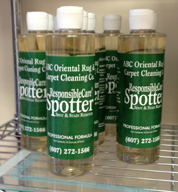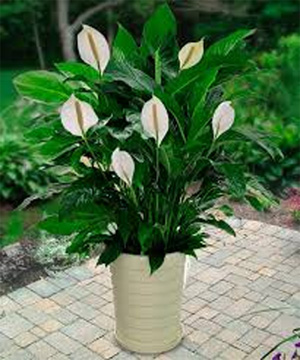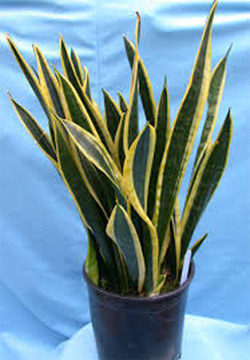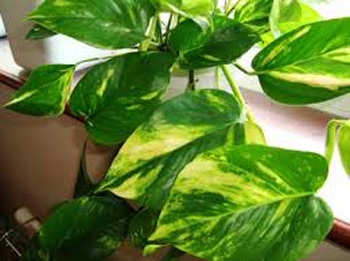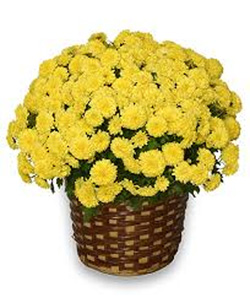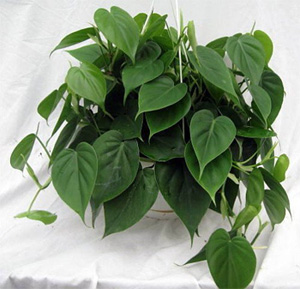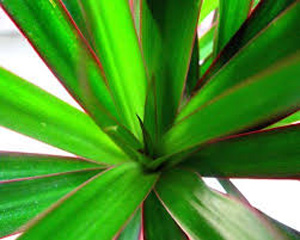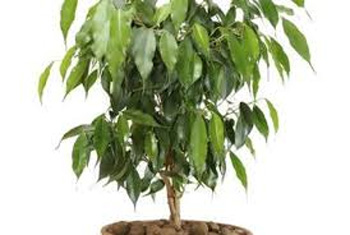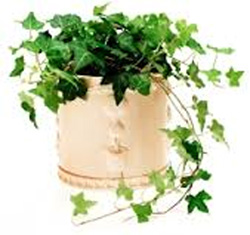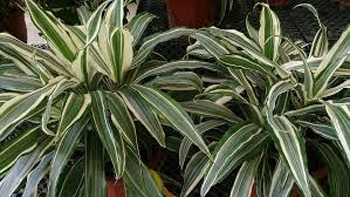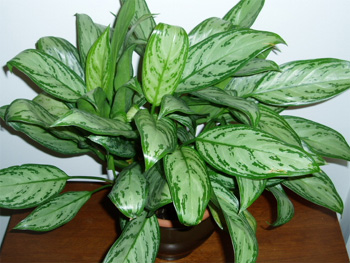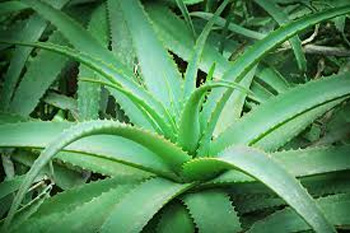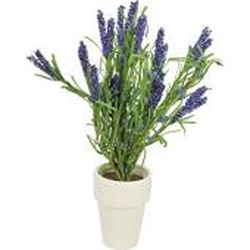TOXIC AIR PURIFYING HOUSEPLANTS
Toxic air purifying houseplants will do an excellent job of absorbing toxins from our indoor environment as long as they are kept out of reach of dogs, cats, and small children.
The list below gives a list of toxicity of each plant, the types of air pollutants they absorb, and a brief description of care.
Peace Lily (Spathiphyllum)
The Peace Lily is not a true Lily. If ingested by humans or animals it can cause painful symptoms and sometimes death. It can cause burning and swelling lips, mouth, and tongue, difficulty speaking or swallowing, vomiting, nausea, and diarrhea in humans. For animals it can cause burning mouth, excessive salivation, diarrhea, dehydration, lack of appetite, and vomiting. If it is left untreated, Peace Lily poisoning could lead to renal failure.
The Peace Lily can remove all three of the most common VOCs — Formaldehyde, Benzene and Trichloroethylene. It can also combat Toluene and Xylene.
The Peace Lily should have bright light in the winter and diffused light in the summer. The soil should be moist but not soggy. The plant should be fed every 2 months.
Snake Plant (Sansevieria trifasciata 'laurentii')
The Snake Plant is also known as Mother-in-Law’s Tongue and Hemp Plant. The toxicity level is low in humans but can produce symptoms such as mouth pain, salivation, and some nausea as well as possible dermatological problems (although it is mainly toxic if ingested). It can cause excessive salivation, pain, nausea, vomiting, and diarrhea in cats and dogs.
The Sanseveria is one of the best plants for filtering out Formaldehyde, which is common in cleaning products, toilet paper, tissues, and personal care products.
It is a succulent plant that only needs dim daylight and not much watering. An occasional hour in the sun daily would be good for this plant.
These plants also absorb carbon dioxide and release oxygen at night (the opposite of the process most plants follow). This slight oxygen boost may be beneficial to better sleep with these plants in your bedroom.
Golden pothos (Scindapsus aures)
Golden Pothos is a poisonous plant and should be kept away from small children and pets. Golden Pothos is considered to be only mildly harmful in small quantities, but can produce uncomfortable and sometimes serious side effects in animals and people. In humans, it can cause burning of the mouth, skin irritation, swelling of lips, tongue, and throat, vomiting, and diarrhea. Cats and dogs can suffer from drooling, choking, swelling of the mouth and tongue, difficulty breathing, and stomach upset. It could even possibly lead to renal failure and/or death.
Variations of the Golden Pothos, such as Devil's Ivy, Taro Vine, and Ivy Arum, are toxic to dogs and cats and can cause oral irritation, intense burning and irritation of the mouth, tongue, and lips, excessive drooling, vomiting, and difficulty swallowing.
The Golden Pothos is a powerful plant for removing impurities from the air, especially Formaldehyde. Since car exhaust is filled with Formaldehyde, it might make sense to use it in a garage.
This plant needs bright, indirect light and not too much water. It is easy to propagate from cuttings.
Chrysanthemum (Chrysantheium morifolium)
The Chrysanthemum is toxic to dogs, cats, and horses and can cause vomiting, diarrhea, hypersalivation, incoordination, and dermatitis.
NOTE: When choosing a plant for indoors, make sure to choose a floral mum and not a garden variety, which does best when planted outdoors.
The colorful flowers of a mum can do a lot more than brighten a home office or living room. The blooms also help filter out Benzene, which is commonly found in glue, paint, plastics, and detergent.
The Chrysanthemum plant loves bright light. A spot near an open window with direct sunlight will encourage it to bloom.
Heart Leaf Philodendron (Philodendron oxycardium)
This plant is also known as Horsehead Philodendron, Cordatum, Fiddle-Leaf, Panda Plant, Split Leaf Philodendron, Fruit Salad Plant, Red Emerald, Red Princess, and Saddle Leaf.
The Heart Leaf Philodendron is a climbing vine plant and is toxic to dogs and cats when eaten. It can cause oral irritation, intense burning and irritation of the mouth, tongue, and lips, excessive drooling, vomiting, and difficulty swallowing.
This plant is very efficient at removing all kinds of VOCs, and especially good at removing Formaldehyde from sources such as particleboard.
The Heart leaf philodendron is a very low-maintenance plant. It thrives with bright, indirect light and very little maintenance. It needs moist, well-drained soil.
Red-edged Dracaena (Dracaena marginata)
This plant is also known as Corn Plant, Cornstalk Plant, Dragon Tree, and Ribbon Plant.
The Red-Edged Dracaena plant is toxic to dogs and cats and can produce vomiting (sometimes with blood), depression, anorexia, hypersalivation, and dilated pupils (in cats).
This plant is best for removing Xylene, Trichloroethylene and Formaldehyde, which can be introduced to indoor air through lacquers, varnishes, and gasoline.
There are many types of Dracaena plants. This distinctive version is distinguished by the purple-red edges on its ribbon-like green leaves. Although it grows slowly, it can eventually get as high as 15 feet tall, so it may be necessary to keep it in a room with high ceilings and moderate sunlight.
Weeping fig (Ficus benjamina)
This plant is also known as a Fig Plant and an Indian Rubber Plant.
A Weeping Fig is toxic to dogs and cats.
This plant helps to filter out pollutants that typically occur in carpet and furniture such as Formaldehyde, Benzene, and Trichloroethylene.
It is a little tricky to care for a Ficus. Dramatic changes in temperature and fluctuations in light levels can negatively affect them.
Azalea (Rhododendron simsii)
The Azalea is toxic to dogs and cats and may cause vomiting, diarrhea, hypersalivation, weakness, coma, hypotension, CNS depression, cardiovascular collapse and death. Ingestion of a few leaves can cause serious problems. The toxin interferes with normal skeletal muscle, cardiac muscle, and nerve function.
This beautiful flowering shrub can combat Formaldehyde from sources such as plywood or foam insulation.
These plants do best in cool areas around 60 to 65 degrees but should be in a bright spot during the day.
The soil should not be allowed to become too dry. Soaking the pot in water occasionally will enable moisture to get to the center of the pot. Make sure to remove old flowers as they fade and remove any dead blooms that may fall into the soil to prevent disease. Fertilize in late winter and in early summer before the new buds form but do not fertilize while the plant is flowering.
English ivy (Hedera helix)
This plant is also known as Branching Ivy, Glacier Ivy, Needlepoint Ivy, Sweetheart Ivy, and California Ivy.
The English Ivy is toxic to dogs, cats, and horses and can cause vomiting, abdominal pain, hypersalivation, and diarrhea. The foliage is more toxic than the berries. Large quantities of ivy must be ingested to cause serious problems, but all parts of English ivy can cause symptoms that include skin irritation, burning throat after eating the berries, fever, and rash.
English ivy is easy to grow and an excellent air-purifying plant. Those suffering from asthma or other breathing problems at night could benefit greatly from English ivy, possibly improving sleep quality as well. English Ivy can reduce airborne mold by up to 94% and airborne fecal-matter particles, as well as filtering out formaldehyde that can be found in some household cleaning products.
These plants should be grown in moist soil with four or more hours of direct sunlight each day During the winter, they prefer cooler temperatures between 45 and 50 F. Red spider mites can be a problem but misting both sides of the foliage daily helps to discourage them as well as increasing the humidity.
Warneck Dracaena (Dracaena deremensis 'warneckii')
This plant may be toxic to cats and dogs.
The Warneck Dracaena can combat pollutants associated with varnishes and oils.
The Warneckii grows inside easily, even without direct sunlight. With striped leaves forming clusters atop a thin stem, this houseplant can be striking, especially if it reaches its potential height of 12 feet. It is best grown in an east window or out of direct sun in the south or west windows. Keep soil just moist to the touch.
This Dracaena is known for its white stripes along the edges of its leaves. If the plant gets brown tips on its leaves or brown streaks, it may be because of too much fluoride in the tap water. If that's the case, it would be a good idea to water with bottled H20. The brown tips can be cut off.
Chinese evergreen (Aglaonema crispum 'deborah')
Chinese Evergreen is toxic to dogs and cats causing oral irritation, intense burning, and irritation of the mouth, tongue and lips, excessive drooling, vomiting, and difficulty swallowing.
This is an easy-to-care-for plant can help filter out a variety of air pollutants and begins to remove more toxins as time and exposure continues.
These houseplants thrive in low light and will grow in places where other plants won't grow. Because they are tropicals, they like humid air. If the air is too dry, the tips might turn brown. It would be a good idea to mist the leaves occasionally. This plant should not be kept in direct sunlight and the soil should be kept barely moist at all times. Even with low light, it will produce blooms and red berries.
ALOE VERA
This plant is toxic to dogs and cats. Symptoms may include vomiting, depression, diarrhea, anorexia, tremors, and change in urine color.
Aloe Vera is an easy-to-grow, sun-loving succulent. The gel inside an Aloe plant has been used to help heal cuts and burns for more than 6000 years. In early Egypt it was known as the ‘plant of immortality.'
The Aloe Vera helps clear the air of Formaldehyde and Benzene, (a byproduct of chemical-based cleaners, paints and more).
An added benefit of the Aloe Vera plant is it has also been shown to emit oxygen at night. In the bedroom, the increased oxygen supply may help with insomnia and improve the quality of sleep.
COMMON LAVENDER, ENGLISH LAVENDER (Lavendula augustifolia)
Lavender is toxic to dogs, cats, and horses. Ingestion of the plant or flowers may cause mild GI upset. Concentrated Lavendar oil may damage tissues. Dilute oil (as in massage oil) may cause mild GI upset as well.
Lavender has been shown to reduce anxiety and stress, slow heart rate, improve sleep, etc.
Lavandula (common name Lavender) is a genus of 39 known species of flowering plants in the mint family, Lamiaceae. It is not a hardy plant and should be grown outdoors. Normal indoor lighting is usually not sufficient enough for them. Overwatering should be avoided as well as drafts.
NEED MORE INFORMATION ON TOXIC AIR PURIFYING HOUSEPLANTS?
If you would like to check to see if your houseplants may or may not be toxic to pets, the ASPCA maintains a website with names and photos of over a thousand different plants, both indoor and out. It can be found here.
Please also see our article on non-toxic Air-Purifying Houseplants.
Another interesting article on decorating and brightening up your home with indoor plants can be found by clicking here.
Top of Toxic Air Purifying Houseplants
"The Cleanest Clean You've Ever Seen."
by
ABC Oriental Rug & Carpet Cleaning Co.
130 Cecil Malone Drive Ithaca, NY 14850
607-272-1566

Ken and Harriet Adams
Owners of ABC
130 Cecil Malone Drive Ithaca, NY 14850
For directions, Click Here.
OPEN:
Mon through Thur-8am to 5pm, Fri-8am to 4:30pm
Weekends-Saturdays-10am to 1pm
ABC Oriental Rug is on Facebook!
We regularly post tips and information about your carpet, rugs, upholstery, and tile and grout so please visit us often.
We update our Facebook page with our latest discounts and we are also offering exclusive promotions to our Facebook fans. These are limited and short notice promotions.
When you like our page, you will also be able to claim your special gift from us!
"Like Us"
on Facebook
and find out
what's going on!

ABC
Carpet & Rug
Spotting Guide
Did you know that our ABC Responsible Care Spotter can get those pesky spots out of your carpet and will work equally as well on your clothes and upholstery?
Stop by our office and pick one up. They are $5.00 + Tax but if you have carpets or upholstery cleaned in your home or business, just request a free one from your Technician.
And don't forget to fill out the form above to download your free ABC Spotting Guide!
